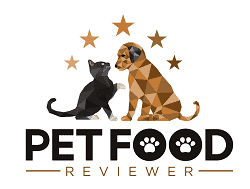What Is Agar-Agar?
Agar-Agar is a processed ingredient derived from seaweed, in particular, red or purple seaweed. It has an extensive history and was first found back in the 1600s in Japan, and despite its increased use worldwide, most of its production still takes place in Japan.
The seaweed is processed at an industrial scale in factories and undergoes several steps, including heating and washing, before the final product is produced.
The most common form of Agar-Agar that is produced is in a powdered form similar to flour. This powder can then be dehydrated with water to produce a gelatin-like substance.
Once this processed ingredient has been created, it is then used by many industries across the world to be mixed or included in various processed foods or biological applications.
Agar-Agar can be used in human foods like desserts (jellies, puddings, and custards are common examples), and it can be used as an alternative to gelatin for vegetarians.
Another interesting use is that Agar-Agar can also be used as a culture media for microbiological work.
While the types of culture media have changed over time, Agar-Agar was, at one point, one of the most popular choices.
But lastly, and more importantly for our discussion, it can be used in foods or products for animals, such as pet food recipes.
Lastly, it’s worth noting that despite being made from seaweed, Agar-Agar becomes an incredibly neutral product with very minimal smell or taste.
This is one of the factors that makes it so popular to be mixed with other foods, as those consuming are extremely unlikely to notice its presence.
Why Is Agar-Agar In Pet Food?
Keen-eyed pet owners will notice that Agar-Agar is often present in pet food recipes, or more precisely, wet/canned pet food recipes.
The primary reason that Agar-Agar is found in pet food recipes is for its binding, thickening, and gelling properties.
While this may seem odd, this is an important factor when producing wet/canned pet food and is critical to ensure that the food has a consistent texture and appearance.
If there aren’t binding or thickening agents present during the production of wet pet food, it can cause the ingredient to separate from one another, leading to food that is less appealing or unpleasant.
There are several of these styles of ingredients used in pet food, along with Agar-Agar. Some of the most common examples include Guar Gum, Carrageenan, Xanthan Gum, and starches like Tapioca Starch and Potato Starch.
Agar-Agar is far from the most popular of these binding agents but is one established option used by many pet food brands.
Is Agar-Agar Bad For Pets?
Firstly, Agar-Agar is approved for use in pet food recipes by the relevant health authorities in the USA and the EU, and secondly, the quantity of Agar-Agar found in most pet food recipes is extremely small.
These two factors combined mean that it is unlikely that Agar-Agar is going to be bad for pets to consume.
However, that doesn’t mean that all pets react positively to its presence, and some experience some mild side effects or symptoms.
The most common of these is an upset stomach or other digestion-related issues like diarrhea. The reason behind this is that Agar-Agar is usually around 80% fiber in its dried form.
This is extremely similar to the mild side effects of other gelling, binding, or thickening agents such as Carrageenan, Guar Gum, and Xanthan Gum.
However, the issue with this is that it can be very difficult to pinpoint if it is the Agar-Agar causing these issues or another ingredient contained within the recipe.
Pet Food Brands That Use Agar-Agar
Despite being relatively unknown or poorly understood by consumers, Agar-Agar is used by a small number of pet food brands, including some that you will be familiar with.
Some well-known examples of pet food brands that use Agar-Agar in some of their recipes include Merrick, Canidae, Gentle Giants, Nulo, Whole Earth Farms, Zignature, and Halo.
However, its use is still far from widespread, and while performing research on the use of ingredients in dog food recipes, we found that of the 100 most popular wet dog food recipes on Chewy.com, none of them contained Agar-Agar as an ingredient.
Despite this, a great example of the use of Agar-Agar is the below ingredient list from Zignature’s Limited Ingredient Lamb Formula wet dog food recipe.
In this recipe, Zignature chooses to only use Agar-Agar as its binding or thickening agent and doesn’t include any of the alternatives like Carrageenan or Guar Gum.
Thickening or binding agents like Agar-Agar are seeing consistent use throughout the industry, and we predict that this will continue in the coming years unless any strong evidence comes out against their use.
However, it will be interesting to see if Agar-Agar becomes more popular and replaces other binding agents in some brands.
If you would like to avoid feeding your pets Agar-Agar, we would recommend that you study the ingredient list of any prospective pet food recipes closely to see if it is present.
While you should not have much trouble finding an Agar-Agar-free recipe, if you can’t find any suitable foods without Agar-Agar, you may want to consider dry pet food as this is very unlikely to contain Agar-Agar.
If you need help with this, be sure to check out our Dog Food Guide or our Pet Food Brand Review Index.




